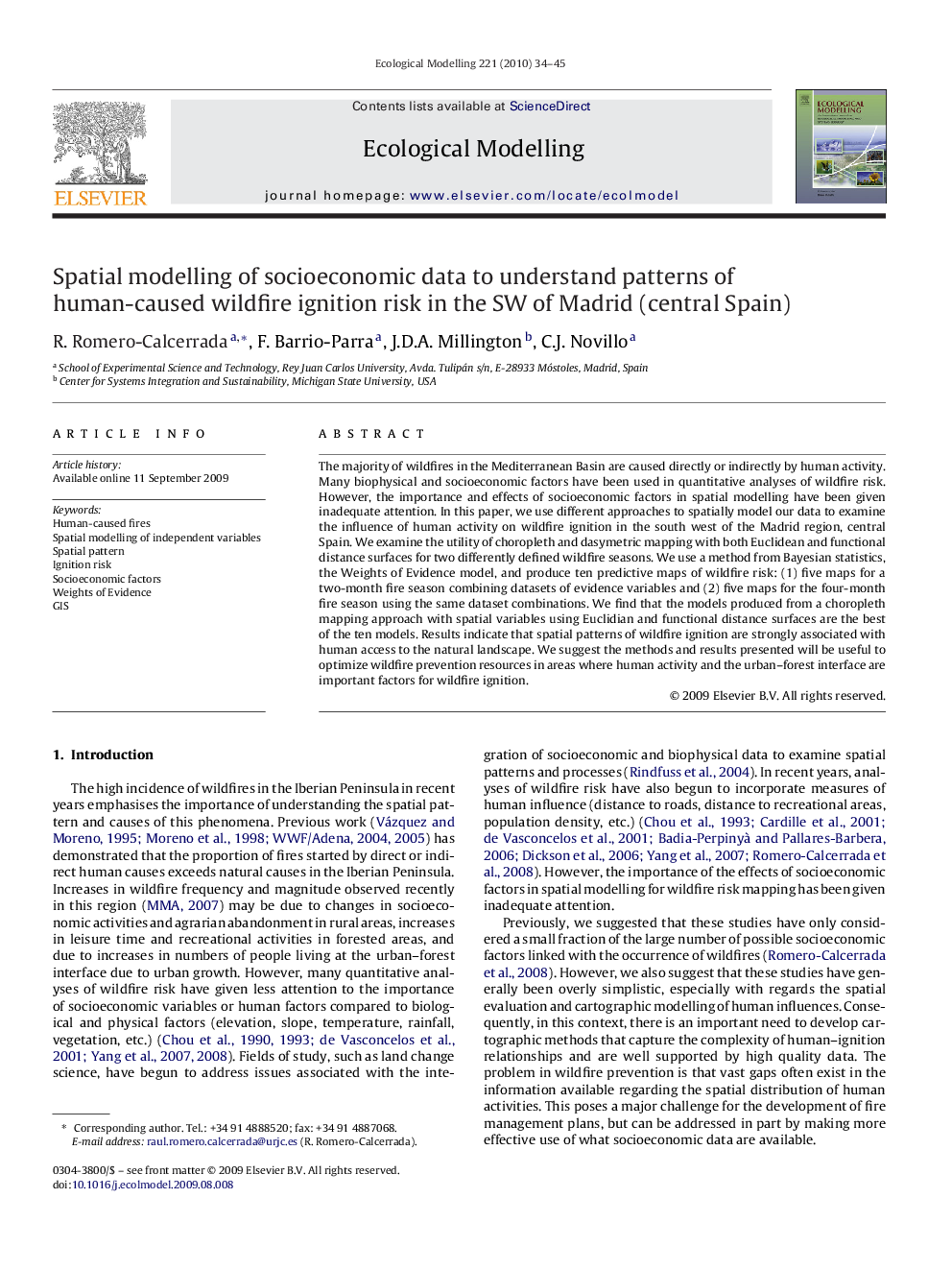| Article ID | Journal | Published Year | Pages | File Type |
|---|---|---|---|---|
| 4377379 | Ecological Modelling | 2010 | 12 Pages |
The majority of wildfires in the Mediterranean Basin are caused directly or indirectly by human activity. Many biophysical and socioeconomic factors have been used in quantitative analyses of wildfire risk. However, the importance and effects of socioeconomic factors in spatial modelling have been given inadequate attention. In this paper, we use different approaches to spatially model our data to examine the influence of human activity on wildfire ignition in the south west of the Madrid region, central Spain. We examine the utility of choropleth and dasymetric mapping with both Euclidean and functional distance surfaces for two differently defined wildfire seasons. We use a method from Bayesian statistics, the Weights of Evidence model, and produce ten predictive maps of wildfire risk: (1) five maps for a two-month fire season combining datasets of evidence variables and (2) five maps for the four-month fire season using the same dataset combinations. We find that the models produced from a choropleth mapping approach with spatial variables using Euclidian and functional distance surfaces are the best of the ten models. Results indicate that spatial patterns of wildfire ignition are strongly associated with human access to the natural landscape. We suggest the methods and results presented will be useful to optimize wildfire prevention resources in areas where human activity and the urban–forest interface are important factors for wildfire ignition.
